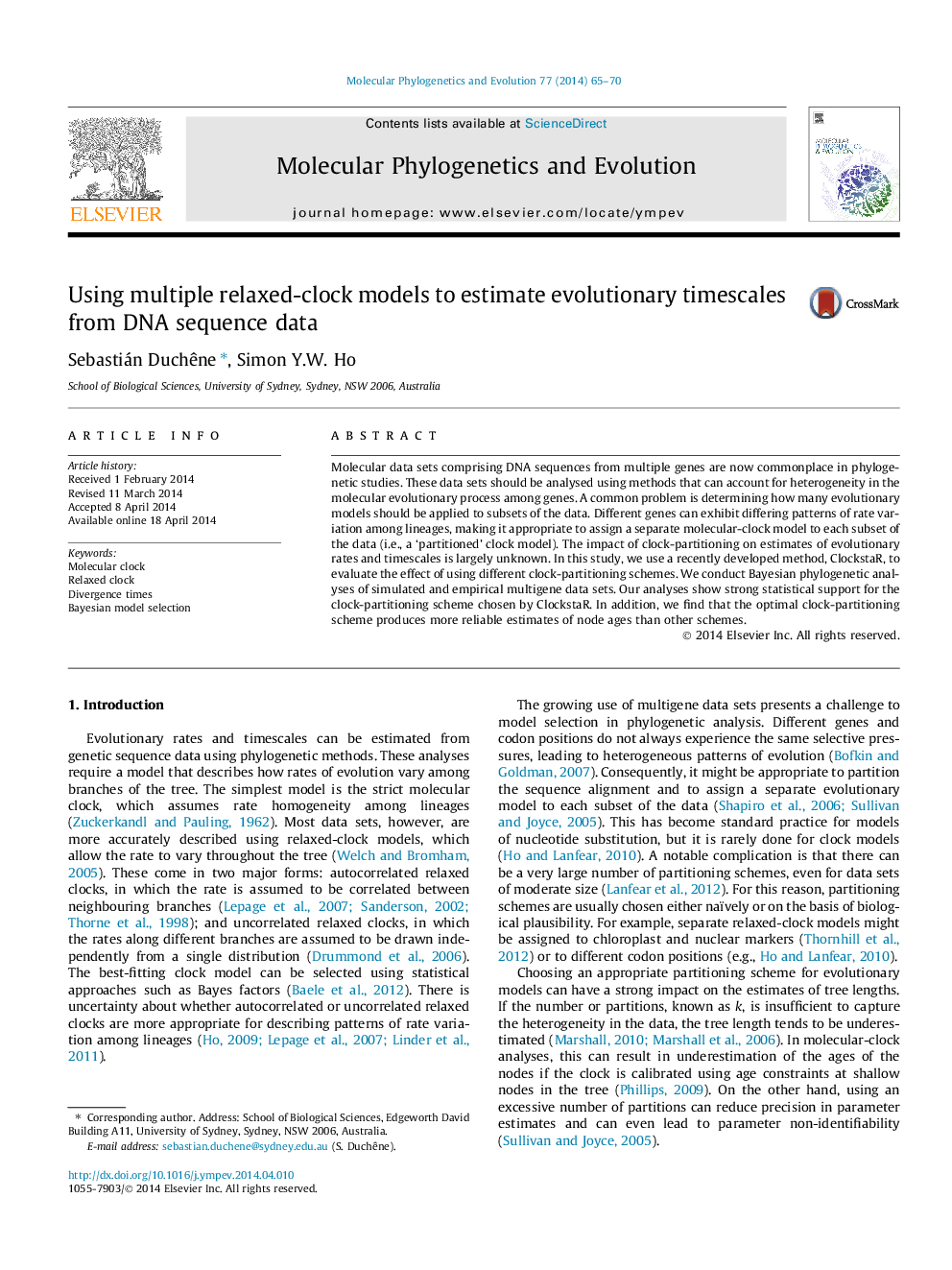| کد مقاله | کد نشریه | سال انتشار | مقاله انگلیسی | نسخه تمام متن |
|---|---|---|---|---|
| 5919453 | 1570818 | 2014 | 6 صفحه PDF | دانلود رایگان |

- Multigene data can be analysed with partitioned-clock models to estimate node ages.
- We compare the optimal clock partitioning scheme with random schemes.
- The optimal scheme has higher statistical fit and more reliable node age estimates.
- ClockstaR is a useful method to find the optimal clock partitioning scheme.
Molecular data sets comprising DNA sequences from multiple genes are now commonplace in phylogenetic studies. These data sets should be analysed using methods that can account for heterogeneity in the molecular evolutionary process among genes. A common problem is determining how many evolutionary models should be applied to subsets of the data. Different genes can exhibit differing patterns of rate variation among lineages, making it appropriate to assign a separate molecular-clock model to each subset of the data (i.e., a 'partitioned' clock model). The impact of clock-partitioning on estimates of evolutionary rates and timescales is largely unknown. In this study, we use a recently developed method, ClockstaR, to evaluate the effect of using different clock-partitioning schemes. We conduct Bayesian phylogenetic analyses of simulated and empirical multigene data sets. Our analyses show strong statistical support for the clock-partitioning scheme chosen by ClockstaR. In addition, we find that the optimal clock-partitioning scheme produces more reliable estimates of node ages than other schemes.
Journal: Molecular Phylogenetics and Evolution - Volume 77, August 2014, Pages 65-70